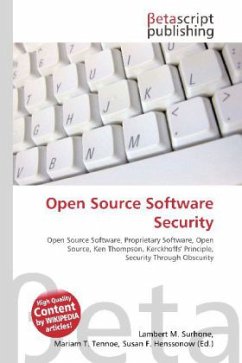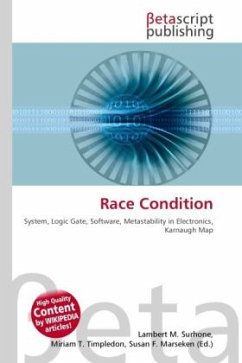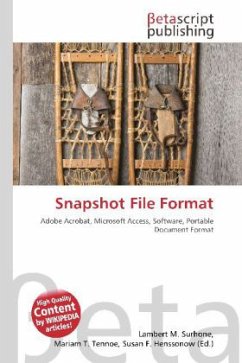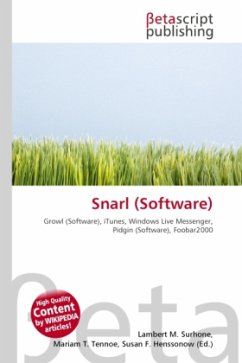
Varnish Software
Versandkostenfrei!
Versandfertig in 6-10 Tagen
19,99 €
inkl. MwSt.

PAYBACK Punkte
10 °P sammeln!
Please note that the content of this book primarily consists of articles available from Wikipedia or other free sources online. Varnish stores data in virtual memory and leaves the task of deciding what is stored in memory and what gets paged out to disk to the operating system. This helps avoid the situation where the operating system starts caching data while they are moved to disk by the application. Furthermore, Varnish is heavily threaded, with each client connection being handled by a separate worker thread. When the configured limit on the number of active worker threads is reached, inc...
Please note that the content of this book primarily consists of articles available from Wikipedia or other free sources online. Varnish stores data in virtual memory and leaves the task of deciding what is stored in memory and what gets paged out to disk to the operating system. This helps avoid the situation where the operating system starts caching data while they are moved to disk by the application. Furthermore, Varnish is heavily threaded, with each client connection being handled by a separate worker thread. When the configured limit on the number of active worker threads is reached, incoming connections are placed in an overflow queue; only when this queue reaches its configured limit will incoming connections be rejected. The principal configuration mechanism is VCL, a DSL used to write hooks which are called at critical points in the handling of each request. Most policy decisions are left to VCL code, making Varnish far more configurable and adaptable than most other HTTP accelerators. When a VCL script is loaded, it is translated to C, compiled to a shared object by the system compiler, and linked directly into the accelerator.












